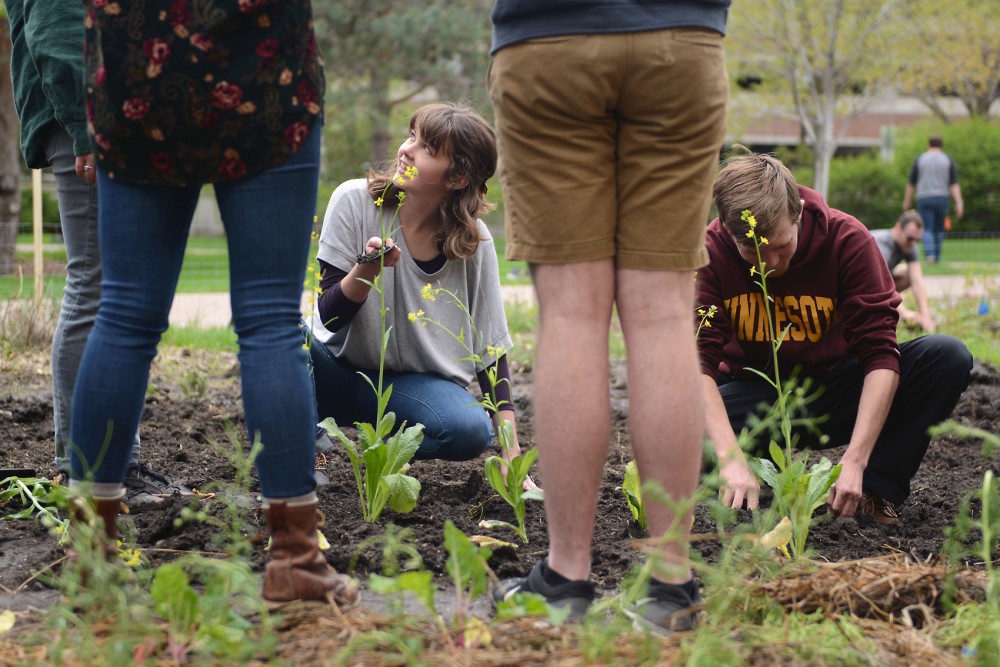From better stormwater infrastructure to more green space on streets, new urban design plans in the Twin Cities are focusing in on sustainability and mental health.
Public health experts and urban designers discussed how the relationship between city design and mental well-being could shape future public spaces at an event hosted at the University of Minnesota’s Institute on the Environment Wednesday.
City and regional officials helped collaborators — such as IonE, Stanford University and wildlife groups — from the Natural Capital Project spend a year studying how nature and urban design can influence mental health.
“People are interested in and want to know more about [this connection], and so we try to help connect the dots between the research and then the practice,” said Marie Donahue, project coordinator and researcher for the Natural Capital Project.
Because cities have limited budgets, officials want projects with multiple health, recreation and tourism benefits, she said.
Analysis of various studies found exposure to nature improves people’s moods and cognitive functions while reducing anxiety.
One Stanford study found lower activity in areas of the brain associated with depression when people walked for 90 minutes in a natural area compared to someone who walked in an urban setting.
As the population of cities worldwide increases, so does the chance of developing mental illness. City residents have a 20 percent higher risk of developing an anxiety disorder and a 40 percent higher risk of depression, the study said.
“Mental health is a big issue in developed countries, and having conversations about it and understanding potential ways of improving mental health is an important aspect,” Donahue said.
It isn’t a coincidence as people move into more urban settings that their mental and physical health suffers, said Dr. Jean Larson, manager of nature-based therapeutics at the Minnesota Landscape Arboretum and faculty lead at the University’s Center for Spirituality and Healing.
Larson said humans are biologically connected to nature.
“We have this … long relationship co-evolving with nature,” she said. “It’s just been in the last few hundred years that we moved away from nature, and … evolution hasn’t caught up.”
This new sedentary lifestyle leads to increased depression, anxiety, obesity and diabetes rates, Larson said. “It all adds up.”
In the last two decades, urban design was focused on physical health, but this new research could expand the field, said Lacy Shelby, principal urban designer for the City of Minneapolis Community Planning and Economic Development.
“There is so many environmental benefits to additional greenery, and now [we] have this mental health benefit,” she said, “[It] feels very new, and as practitioners we’re just learning along with researchers to try and understand how to pair them.”
Minneapolis officials are creating a new plan to include nature-based designs in the city over the next 30 years, and St. Paul officials want to redesign Snelling Avenue with green storm water treatment in projects like the new soccer stadium.
Shelby said she focused on how cities can bring more landscape-appropriate trees, planters and gardens to urban streets for a little dose of nature.
“A lot of times, nature is not necessarily perceived as ‘nature’ to most of us,” she said at the meeting. “We often don’t realize we can experience nature just on the street.”


